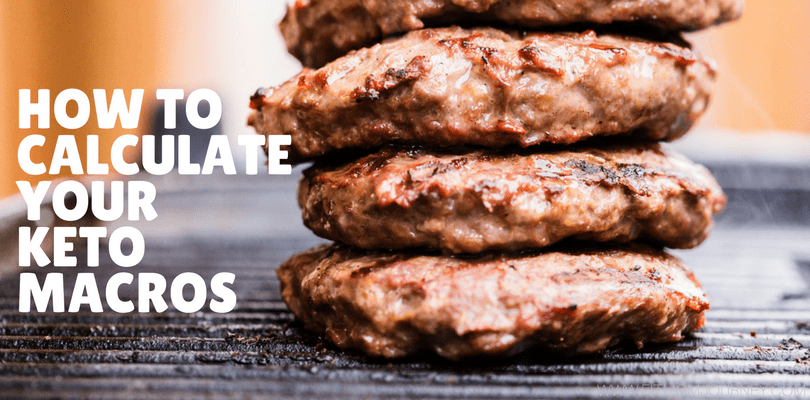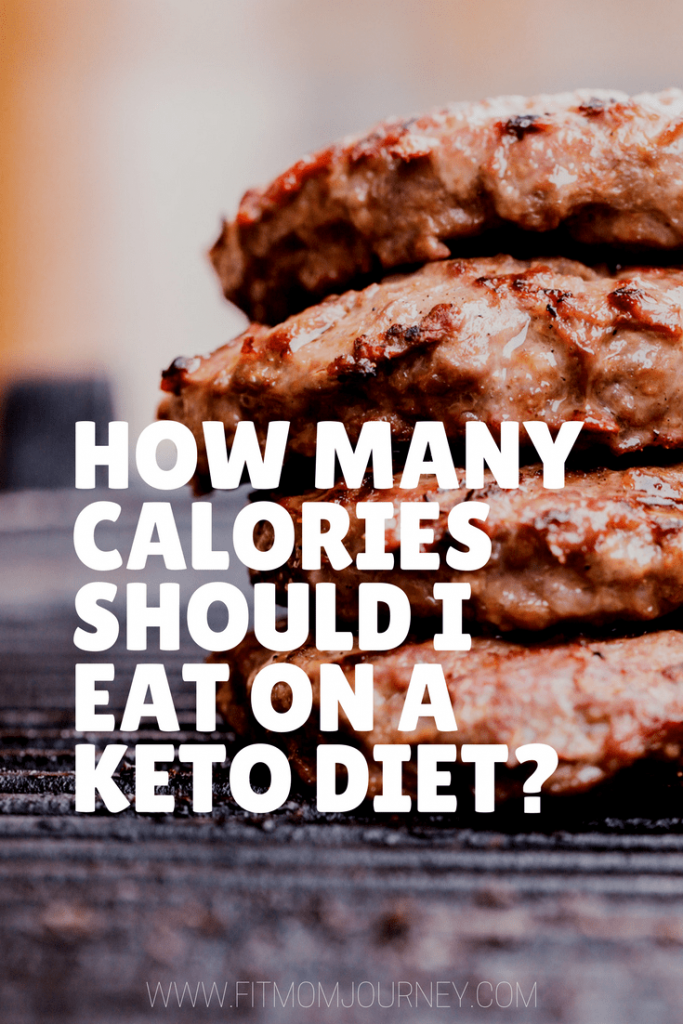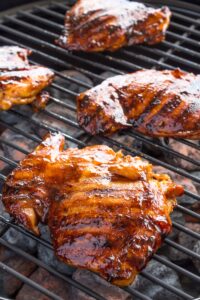
How To Calculate Macros for Keto
So you're interested in Keto?
Often, there is so much confusion surrounding Macros and how to calculate Keto Macros. Today, I'm going to answer all your Keto Macro questions, including the one I get more frequently: “How many calories should I eat on Keto?”
What is a Ketogenic Diet?
A Ketogenic Diet, also know as the Keto Diet, is a very high fat, very low carb, moderate protein diet that is very popular because it can cause you to lose body fat very fast, and study after study after study has linked Keto with benefits against cancer, diabetes, Alzheimer's, epilepsy, and more.
Eating Ketogenically involves cutting carbohydrate intake from 200-300g daily down to 20-50g daily and replacing those missing carbs with fat. Reducing carbohydrates this drastically puts your body in a state of Ketosis.
Ketosis is a metabolic state in which you body uses fat for fuel, rather than carbohydrates.
When you eat normally, when you consume more carbohydrates than you body needs to run for the next 24 hours or so, you body turns those excess carbs into fat and stores them as (unwanted) body fat.
But if you cut the carbs in your diet drastically, your body enters Ketosis and starts burning that stored fat for fuel, resulting in better health and body composition for you. Read Keto 101 for the lowdown on the Ketogenic Diet.
Related Reading: What is the Keto Diet? (Keto 101)
What are Macros?
If you're learning about the Keto Diet, you may be reading about all these people tracking their “macros' and wondered what that was all about. Many veteran Keto dieters will throw around the phrase “if it fits your macros” to try and help beginners, completely skipping over what, exactly, macros are.
It can be completely overwhelming when you're trying to get started. What the heck are macros even? Why are they important? What is the simplest way to calculate macros for keto?
Let me break it down for you.
Macros = a short version of the word “macronutrients”
Macronutrients are found in every food, and are the things that fuel our bodies. Macros include carbohydrates, proteins and fats, and these make up the calories we consume. Macros are important in Keto, because in order to get your body into ketosis so it can burn stored fat, you have to eat the correct mix of carb, proteins, and fats.
Carbohydrates
Carbohydrates (or “carbs”) are made up of sugars and starches. Fiber is also a carb, but it does not count toward your carb total on a Keto diet, because we cannot digest fiber.
So when you see a nutrition label, find the line that says “Total Carbohydrates.” Then, find the line that says “Fiber” and subtract it from total carbohydrates
Total Carbs – Fiber = Net Carbs
Carbs are the only macronutrient that is not essential for survival. There are essentials fats and proteins, but no essential carbohydrates.
This is why we drastically cut carbohydrates on a Ketogenic Diet.
And, this is why when we count our carbs, we count net carbs, rather than total carbs to make sure we don't exceed our daily carb limits.
The biggest learning curve in Keto is learning which foods are low in carbohydrates and which are high (and you need to avoid). Check all your food labels, download a low-carb food list or two, or purchase a Keto Meal Plan from a reputable source. Decide on what amount of carbs you should cap your consumption at each day, and then plan your foods to fit within the carb macro.
When you're just getting started, 40g of net carbs per day is a great number to stick to.
As you get better and more Keto-adapted, 20-25g of net carbs per day is a number that you'll find it easier and easier to hit, and it will keep you in ketosis, AKA, a fat-burning machine.
Common Carbohydrates:
- Pasta
- Rice
- Fruit
- Sugar
- Bread
- Honey
- Soda & Juice
Protein
Protein is an essential human macronutrient. It performs so many functions, from immune functions, growth, tissue repair, to preserving lean muscle mass and providing a non-carbohydrate fuel source. Protein plays such a vital role in our bodies that it is considered a building block . It plays a role in almost every biological function.
Protein comes from the body breaking down amino acids. There are 20 amino acids, 9 of which cannot be made by your body, so you have to eat them in your food. The 9 amino acids you need to eat are:
- Histidine
- Isoleucine
- Leucine
- Lysine
- Methionine
- Phenylalanine
- Threonine
- Tryptophan
- Valine
And if you don't get enough of these amino acids? It may result in malnutrition or other diseases.
In a Ketogenic Diet, if you preserve your lean muscle mass* and and still burn stored fat, you have to eat the correct amount of protein. The amount of protein you need to eat is based on how much lean muscle mass you have. Here are some handy guidelines:
- 0.6 – 0.8 grams per pound of lean body mass to preserve muscle mass
- 0.8 to 1.2 grams per pound of lean body mass to gain muscle mass
It is important to make sure you're eating enough protein, so that you don't lose muscle mass. Your goal should be to lose stored fat and either keep or build lean muscle mass, no matter what the scale says.
Eating adequate protein will not only make your shape more desirable, it will it will keep your metabolism healthy and your organs functioning properly.
There is another side to eating protein, and that is eating too much protein. Eat too much protein and your body will actually turn it into carbohydrates, and it can damage your kidney. Use the ranges above to aim for a number that fits your body and your goals.
What Does This Look Like in Real Life? (Example Scenario)
Say you are a 200lb female with 37% body fat.
This means you have 74 pounds of body fat (0.37 x 200)
Then, if you subtract body fat pounds from what you weigh, that means you have 126 pounds of lean mass.
To find your optimal protein intake, take lean body mass and multiply it by the number (from the reference above) that will help you hit your goals. Not sure what number to use? Start with 0.8, since it's pretty standard and will work for pretty much everyone.
126 x 0.8 = 100.8g of protein daily
So, you need to eat 101g of protein each day to preserve your lean mass.
Or, you can figure how many calories you need from protein each day:
101g of protein x 4 calories per gram = 404 calories from protein each day
*Quick side note about muscle mass: Have yo measured your lean body mass before? If not, there a couple of ways to do it:
- With an at-home scale: This is the easiest way to measure your lean body mass, and very affordable with an at-home body fat scale. However, this method is the least accurate, with studies finding that they can be up to 3% wrong in either direction. They are so easy to use, though that if you take the number with a grain of salt, the number it gives can be a good indicator of whether your lean mass is trending up or down.
- A Set of Calipers: This method is very accurate and very inexpensive. You can measure your body fat in the comfort of your own home.
- Hydrostatic Weighing/Underwater Weighing: This method is the most expensive, but very, very accurate, and involves completely submerging yourself underwater. You have to go to a center and have a professional complete your test, but this method is the best, and a good idea to have done every now and then.
Common Types of Protein:
- Red Meat
- Fish
- Poultry & Pork
- Cheese
- Dairy
- Eggs
Fat
Finally, we've made it to fat: probably the most talked about aspect of the Keto Diet. Fat is probably the most underrated nutrient in our diet. We don't eat enough of it, and it performs essential functions such as helping us absorb Vitamins A, D, E, and K, helping with growth and development, and helping our organs run smoothly.
Plus, dietary fats help us feel full!
Dietary fat falls into two categories: glycerol and fatty acids. There are two types of fatty acids that are body can't make on it's own: linoleic acid and linolenic acid. You have to make sure to eat enough of these fatty acids in your food.
Dietary fat has the ability to satiate hunger better than any other macronutrient. This is why sticking to those low-fat diets hyped by the physician community are so hard to stick to. You just don't feel satisfied unless you're eating a sufficient amount of healthy, macro-packed dietary fat.
How Much Fat Do I Need To Eat? How To Calculate Macros for Keto
If you are keeping your carbs to a minimum per the guidelines we went over earlier, and protein at an optimum level, then the rest of the food you eat needs to be fat.
How Many Calories Should I Eat On A Keto Diet?
To determine how much fat you need to eat, you will first figure your Resting Metabolic Rate, and the calories expended from your normal daily activities. I use the KetoGains Calculator. In the example of the 200lb woman above, with 37% body fat, she would have a:
BMR of 1764 calories/day
The calculator allows you to set your activity level, from Sedentary to Vigorously Active, and adds the calories you need to fulfill your activity expenditure. In this example, I'll use the Lightly Active activity level, as if this woman worked in retail, walking frequently. This gives her a TDEE (Total Daily Energy Expenditure) of:
1976 calories/day (TDEE)
Next, you'll add in your goal, whether it's to maintain muscle, Lose Fat, or gain muscle. If this woman wants to lose fat with a 25% calories deficit, and 30 minutes of lifting weights 4 times per week, her new calories would be:
1585 Calories
126g Protein
25 Net Carbs
109g Fat
The Keto Macro Calculator
The KetoGains Calculator is great because you can customize every aspect of it for your goals, your activity level, and how much you want to eat. It's easy to use and customize for your body.
While tracking your macros isn't the most glamorous things in the world, tracking them is a HUGE help in sticking with a Keto Diet.
Get started with the KetoGains Calculator here.
In order to use it correctly, you need to do the following:
- Identify Your Goals: Do you want to lose weight, look better, fit into your high school jeans, build muscle, or just be healthier in general? Almost any goals are great, so long as you have a clear, defined goal.
- Learn about acceptable levels of carbs, fat, and protein: Getting into and staying in ketosis requires that you eat the correct amount of each macro. Use a keto calculator to find your ideal macros.
- Calculate the macros in your foods: Track your foods with an app like MyFitnessPal to ensure you're getting enough protein and fat, and eating few enough carbohydrates. You can do this by creating a meal plan, or learning as you go. Both methods are valid, just pick on that works for you.
I personally create a loose meal plan of Breakfasts, Lunches, and Dinners for the week, and then pick and choose from them based on what we're in the mood for. I actually like tracking my macros on an app after each time I eat, but if you don't, that's ok too.
Check out the Ketogenic Recipe Index
What works best for you? How did you calculate your keto macros?
xoxo,
Gretchen
Are you ready to start or ramp up your keto journey? Sign up for the newsletter for exclusive recipes, tips, and tricks:
This post may contain affiliate links. See my disclosures for more information.







[…] diet, including eating lots of healthy fats, consuming enough protein, keeping your carbs low, and tracking your macros when you plateau. This is all standard to a Ketogenic Diet, as you will read in my post Keto […]